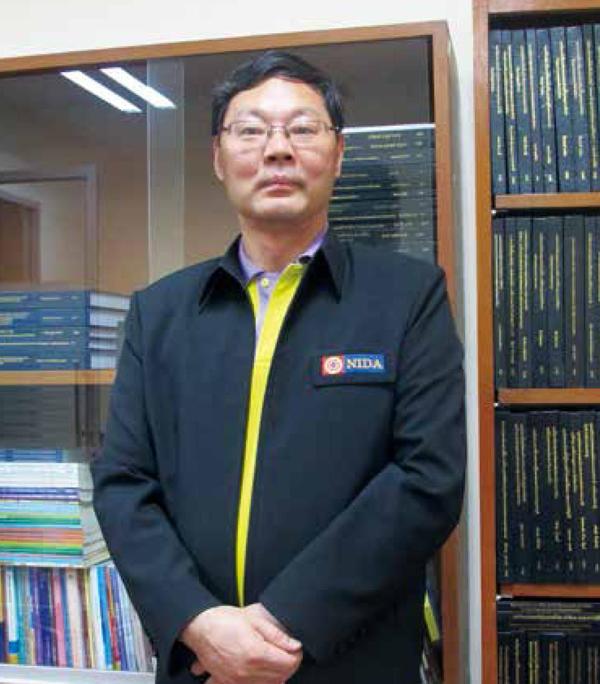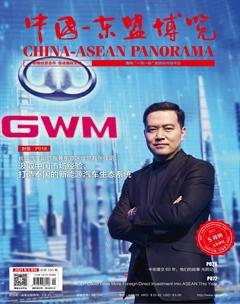中国发展:昨天从“1”到“10”求扩展,明天从“0”到“1”求创新
Dulyapaween Kronsaeng 黄怡哲

“从‘十三五到‘十四五,高质量发展将成为中国经济社会发展的主题。”泰国国家发展管理学院、社会发展与环境管理学院李仁良博士在接受本刊记者采访时这样说道。
“十四五”规划并未设定明确的经济增长目标,在中国五年规划史上是首次。中国不再追求单纯的数量增长,而是从高速增长阶段转向高质量发展新阶段,同时将2021年经济增长目标设定为6%以上,对于作为世界第二大经济体的中国而言,这是相对较高的增速。
“中国强调高质量发展,从‘十四五规划中可以看出,重点并非是基础设施建设,而是对科技创新加大投入,以及在包括教育、公共卫生等方面改善人民生活品質。”李仁良博士说。
他指出“十四五”科技创新规划中,主要有几个要点:一是强化国家战略科技力量,建设空间环境地基监测网、海底科学观测网、空间环境地面模拟装置等;二是面向世界科技前沿,建设高海拔宇宙线观测站等;三是科技成果转移转化,如,高能同步辐射光源、高效低碳燃气轮机等;四是改善人民生活品质,如,医学研究、跨尺度生物医学、动物模型表型遗传研究、地震科学等。
“过去,中国擅长从‘1扩展到‘10,经济实力不断提升,而现在更上了一个台阶,开始从‘0到‘1的突破,摆脱对芯片、半导体等核心关键技术的国外依赖,突破卡脖子的技术瓶颈。”李仁良博士说。
“十四五”规划提到,中国研发支出将年增7%,这是一个较高的水平,进一步推动国家创新发展,专利申请数量也将随之增长。据统计,中国每万人口发明专利拥有量将从2020年的6.3件增加到2025年的12件。
同时,中国仍将高度重视数字经济发展,大力支持人工智能、通信技术等,使数字经济规模持续扩大,所占国家经济结构比重也将越来越大。
社会方面,“十四五”规划将重点改善人民生活品质,人均纯收入实际增速将接近国家GDP增速,重要衡量指标是到2025年失业率控制在5.5%以内。
劳动年龄人口平均受教育年限将从2020年的10.8年增至2025年的11.3年,意味着中国公民将接受到更好的教育。
民生福祉方面,每千人口拥有执业(助理)医师数从2020年的2.9人,要提高到2025年的3.2人。国民的基本养老参保率要从2020年的91%,提升到2025年的95%。此外,居民人均预期寿命将从2020年的77.3岁提高到2025年的78.3岁。
绿色发展方面,到2025年,单位国内生产总值能耗和二氧化碳排放分别降低13.5%、18%,全国森林覆盖率达到24.1%。
李仁良博士说,从“十四五”规划中可以看出,中国推动经济、技术、生态系统、环境、创新、教育、民生等多方面高质量发展,符合2035年远景目标,即到21世纪中叶全面建成富强民主文明和谐美丽的社会主义现代化强国。
中国经济实现增长,将给包括泰国在内的东盟国家带来重要机遇。随着中国经济规模变大,消费需求增长,将为包括水果在内的泰国农产品出口中国带来机会。
随着经济规模不断扩大,相较于西方国家,中国将更倾向于加大对东盟邻国的贸易投资。
作为全球技术的领导者,来自中国的科技产品将不断影响到包括泰国在内的东盟国家,不断扩大海外市场和加大海外投资力度。中国资金雄厚,有技术研发能力,近期,中国汽车巨头长城汽车、名爵已进军泰国市场。一个不断发展、日益强盛的中国,将给世界带来更多机会。
“From the 13th to the 14th Five-Year Plan, high-quality development will be the theme of Chinas economic and social development,” said Dr. Li Renliang, who comes from the National Institute of Development Administration and Graduate School of Social and Environmental Development in the interview with the reporter from China-Thailand Panorama.
No clear goal of economic growth has been set in the 14th Five-Year Plan, which is the first time in the history. China no longer pursues the simple growth in number. Instead, Chinas economy has been transitioning from the phase of rapid growth to the stage of high-quality development. Meanwhile, a 6% growth has been set as the goal for the economy in 2021 — a relatively high growth rate for China, the worlds second largest economy.
“High-quality development has been emphasized. According to the 14th Five-Year Plan, priority is no longer the construction of infrastructure but investment in technological innovation and improvement on education, public health, and quality of life,” said Dr. Li.
The technological innovation in the 14th Five-Year Plan mainly includes 4 major strategies. The first one is to enhance the national strategic technological power, constructing a ground-based monitoring network for the space environment, seabed scientific monitoring network and ground simulator for the space environment, etc. The second strategy is to develop world-facing cutting-edge technology such as building the Large High Altitude Air Shower Observatory (LHAASO). The third is to commercialize scientific and technological outcomes such as the High Energy Photon Source (HEPS) and the efficient low carbon gas turbine, etc. The last one is improving peoples well-being through technologies in medical research, cross-scale biomedical science, phenotypic study on the heredity of animal models and Seismological Science, etc.
“In the past, China did well in economic expansion and gained considerable economic achievement, which is like developing from 1 to 10. Now, China is off to a new stage. It is getting rid of its dependence on foreign countries in key fields like silicon chips and semi-conductor technology, breaking the technology barrier, which is like undergoing the process of from ‘0 to 1 breakthrough,” said Dr. Li.
It is mentioned in the 14th Five-Year Plan that the growth rate of budget in research and development will be 7% on a year-on-year basis, which is quite high. This is likely to further promote the nations innovation, along with an increasing number of patent applications. According to the statistics, the number of invention patents per 10,000 people is likely to reach 12 by 2025, increased from 6.3 in 2020.
Meanwhile, China still lays stress on the digital economy, developing AI technology and telecommunication, expanding the scale of the digital economy and increasing its ratio in Chinas economic structure.
For social development, the 14th Five-Year Plan attaches importance to improving peoples life quality, making the actual growth rate of net income per capita approximately in accordance with the growth rate of GDP. The key measurement is to keep the unemployment rate under 5.5% by 2025.
The average length of schooling for the working-age population will increase from 10.8 years in 2020 to 11.3 years in 2025, signifying better education for Chinese citizens.
As for peoples well-being, the number of licensed (assistant) physicians per 1000 people is 2.9 in 2020 with a goal to increase to 3.2 by 2025. The basic old-age insurance participation rate is to increase from 91% in 2020 to 95% by 2025. Aside from these, the average life expectancy is to be 78.3 in 2025, slightly higher than the 77.3 in 2020.
For eco-development, by 2025, energy consumption per unit of GDP and emission of carbon dioxide will respectively decrease by 13.5% and 18%. The nationwide rate of forest cover will reach 24.1%.
According to Dr. Li, the 14th Five-Year Plan demonstrated Chinas determination to promote high-quality development in areas like economy, technology, eco-system, environment, innovation, education and peoples well-being, etc., all of which follows the Long-Range Objectives Through the Year 2035 and conducive to build China into a great modern socialist country that is prosperous, strong, democratic, culturally advanced, harmonious, and beautiful by the mid-century.
Chinas economic growth will bring significant opportunities to ASEAN countries including hailand. With Chinas economy growing larger and the consumption growing higher, agricultural products like fruit from Thailand will have more opportunities to enter the Chinese market.
With the economic expansion, China prefers to enhance trade and investment with its ASEAN neighbors over western countries.
As one of the leaders of world technology, products from China keep projecting their influence to ASEAN countries like Thailand and keep expanding overseas market and increasing overseas investment. China has abundant funds and research ability. Recently, Chinas automobile giant, Great Wall Motor and MG of Shanghai Motor have entered the Thai market. A developing, prosperous China will bring more opportunities to the world.

